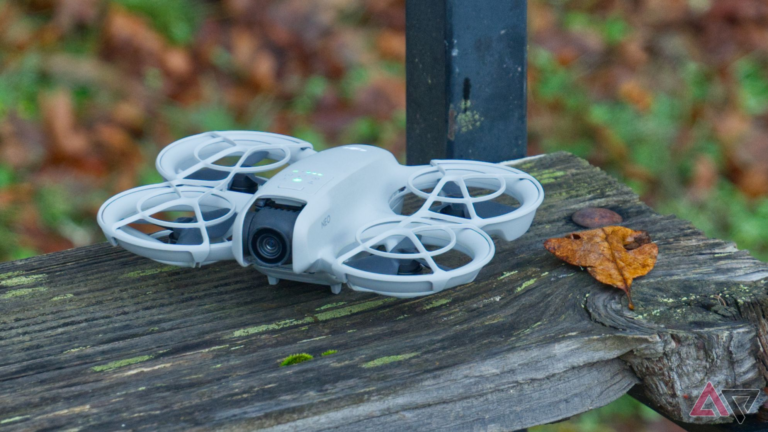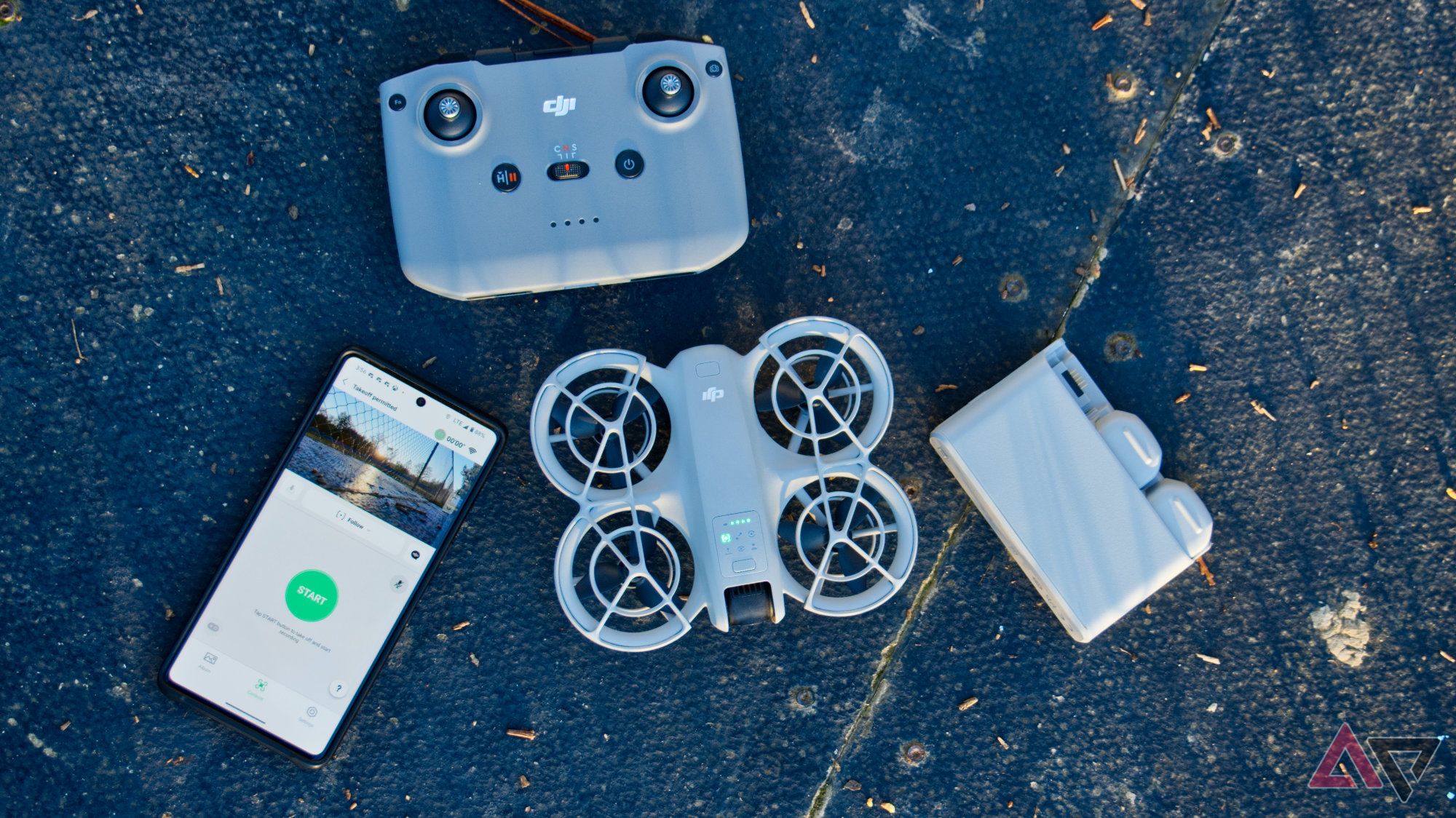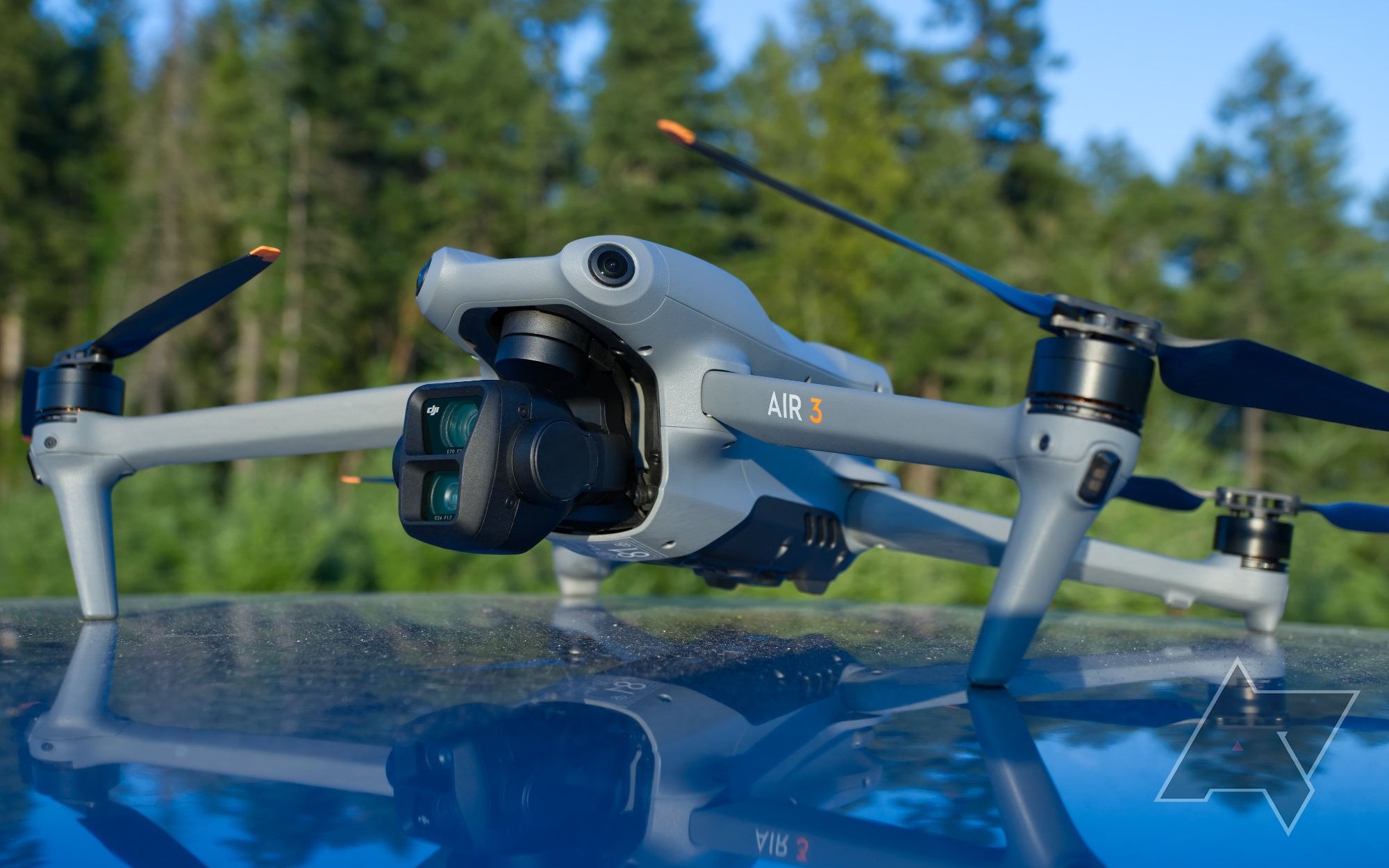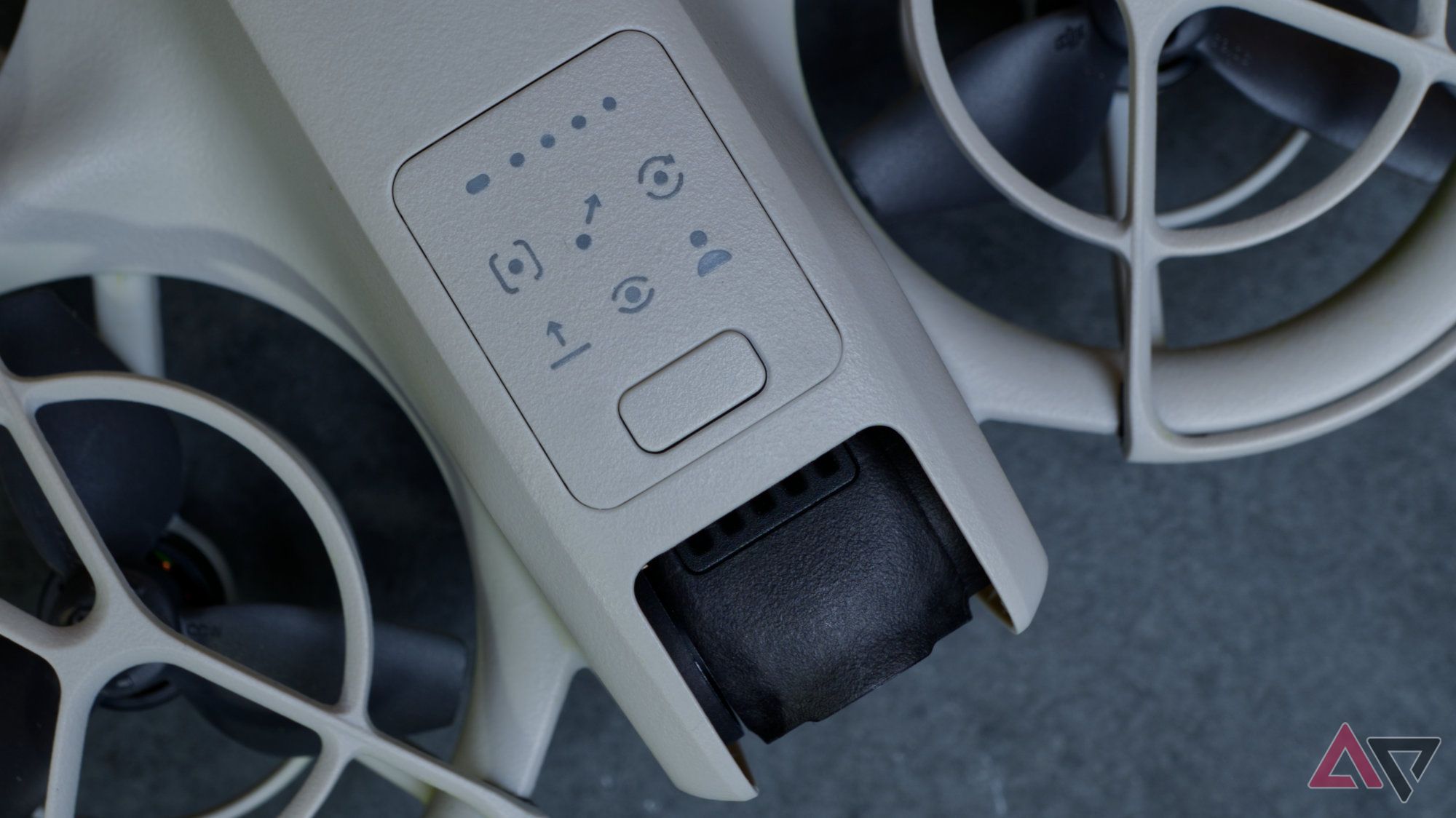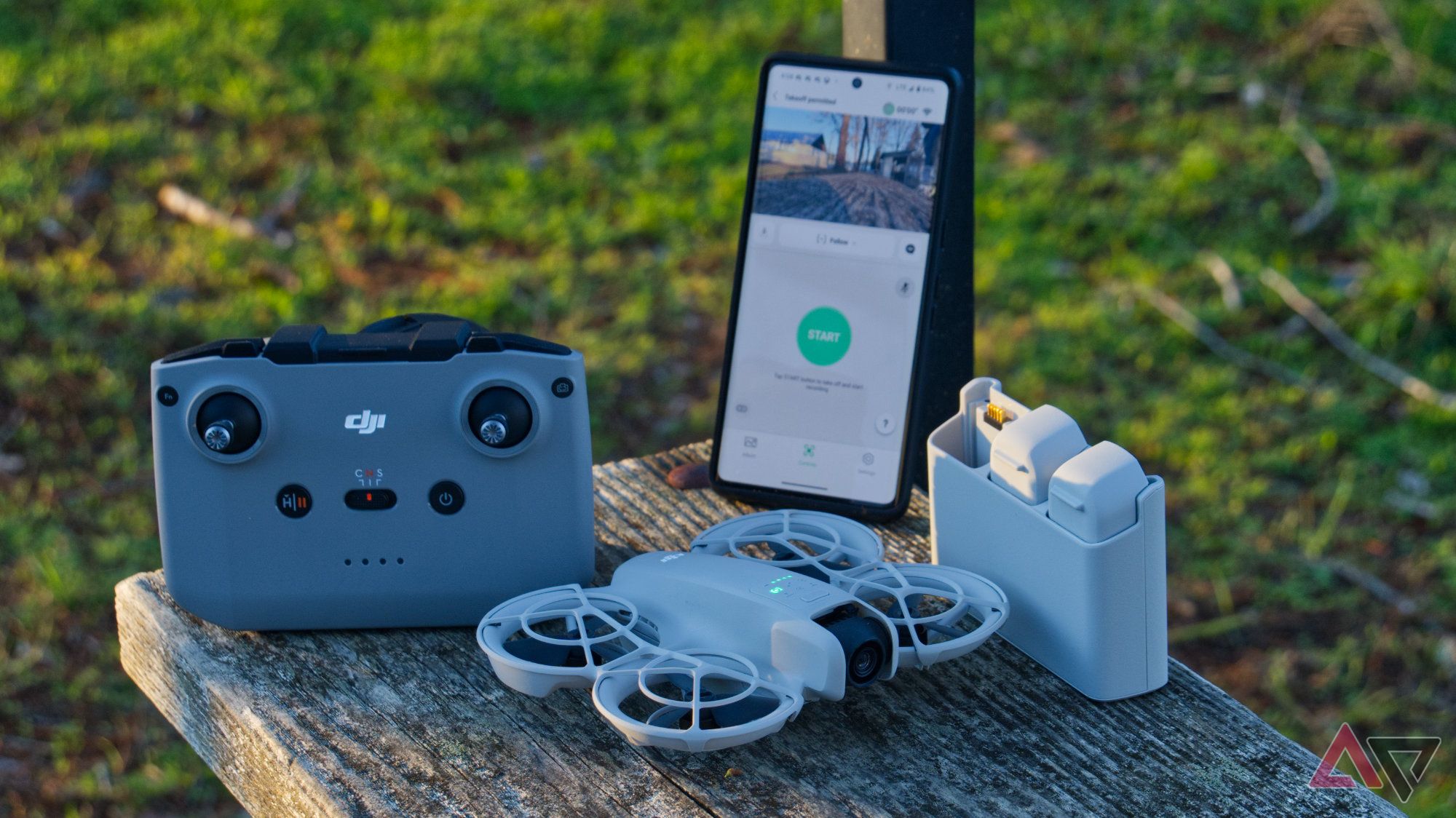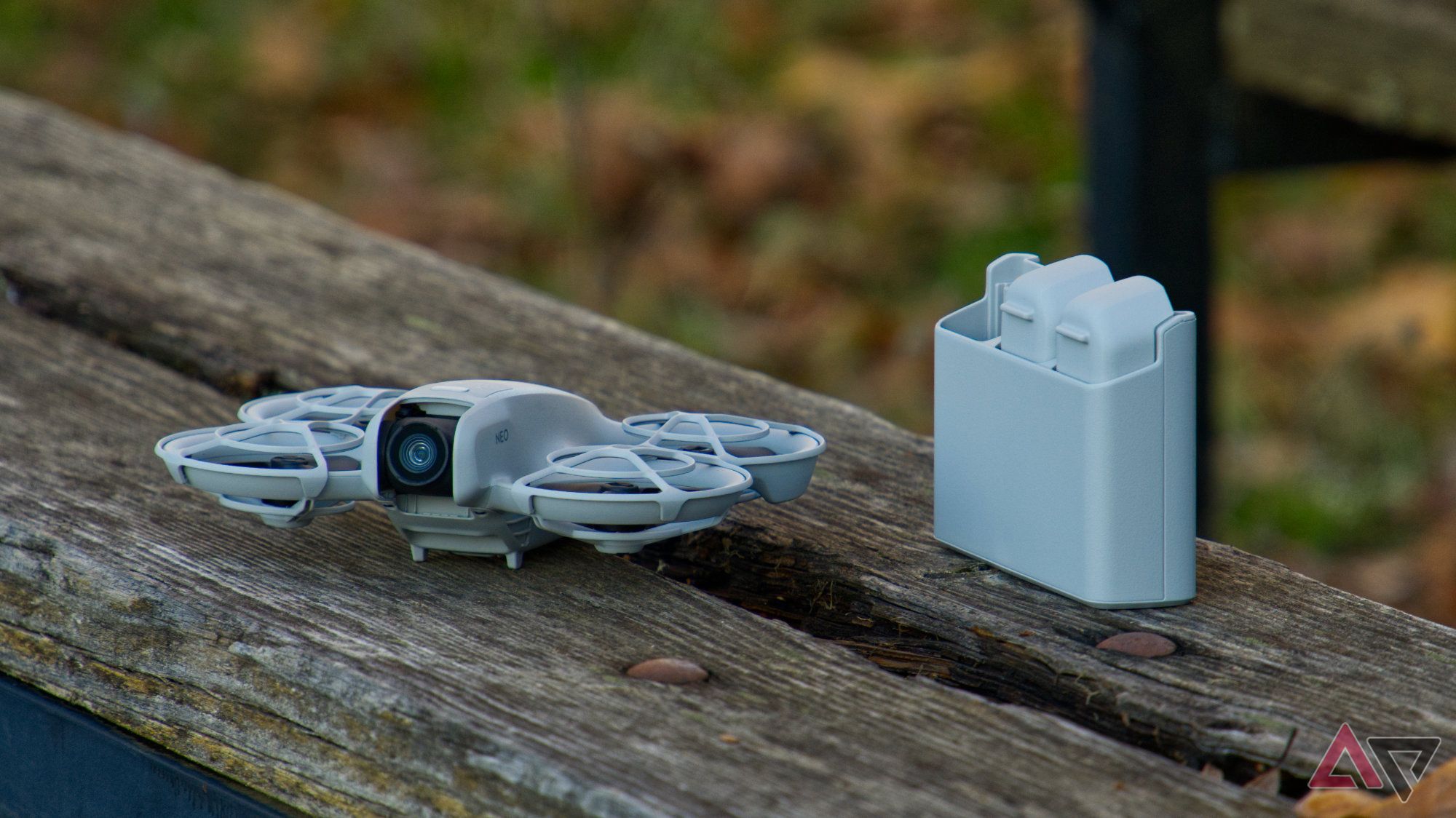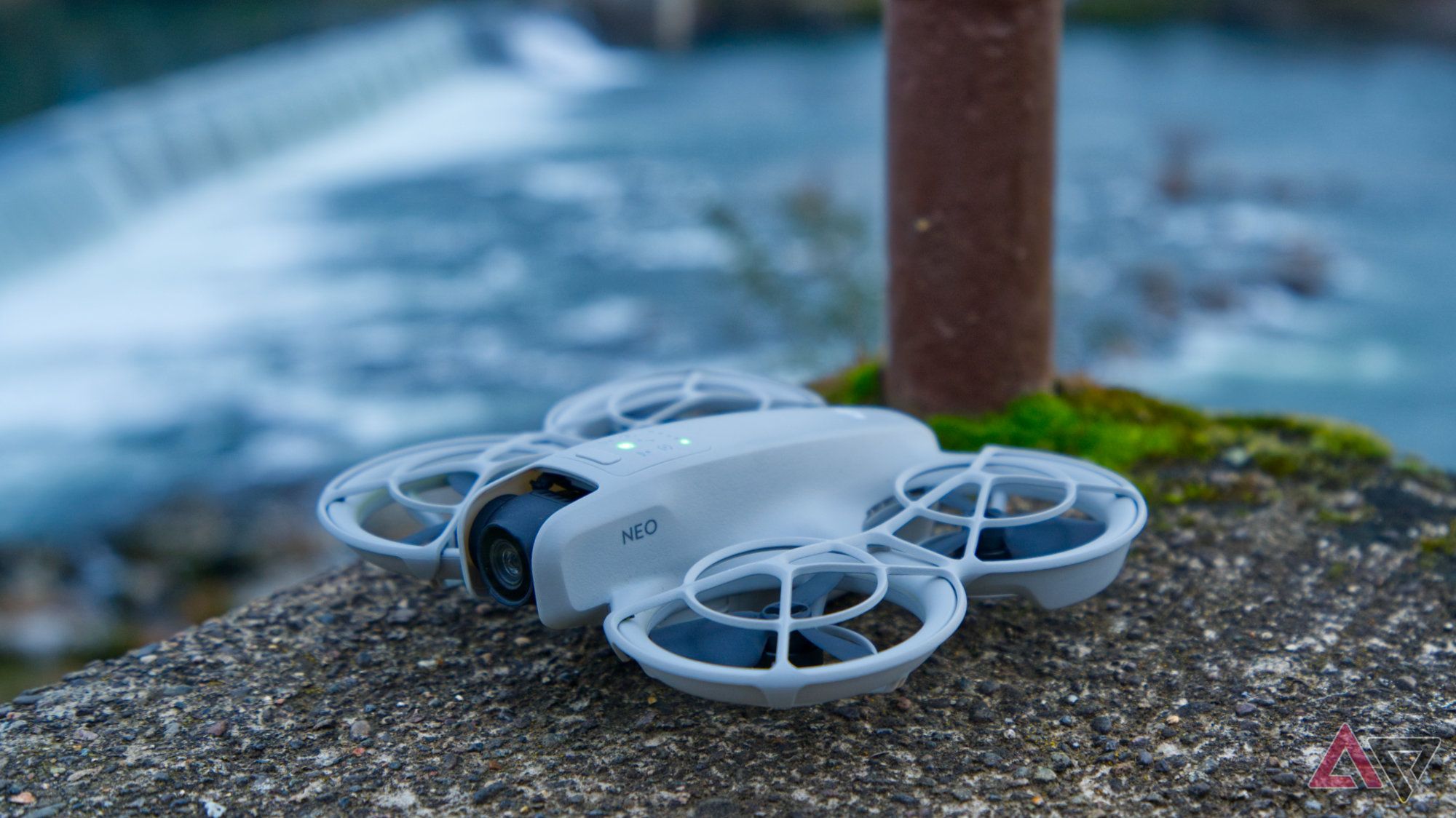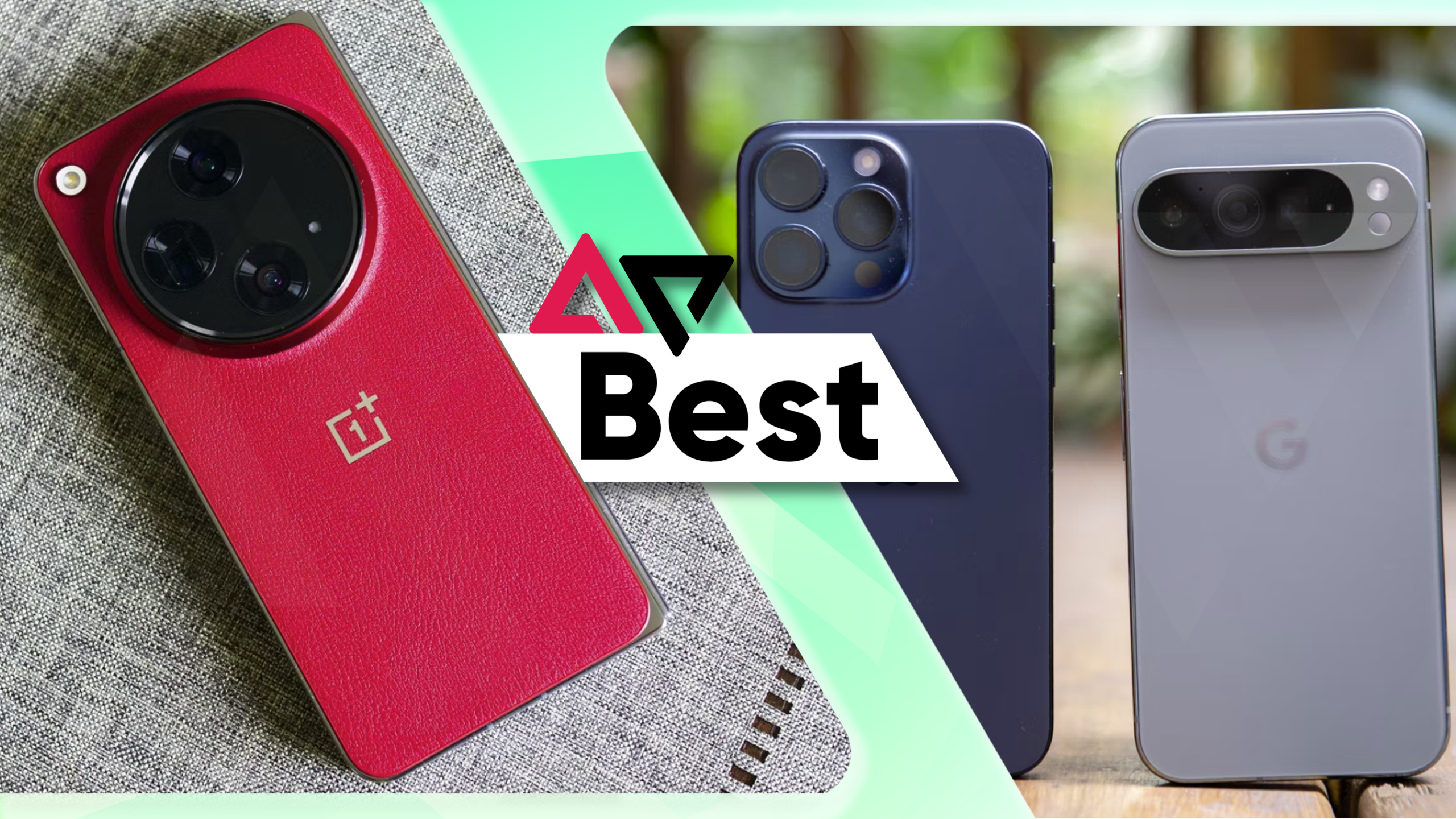DJI has made drones about as big as a Mini Cooper and as small as a smartphone. The new Neo camera drone swings to the tiny side of things, but it packs some surprising flexibility for its size. It’s not a powerful drone by any means. Still, it borrows a set of capabilities from its larger siblings to achieve some fun and interesting shots without the complications that come with larger and more powerful drones.
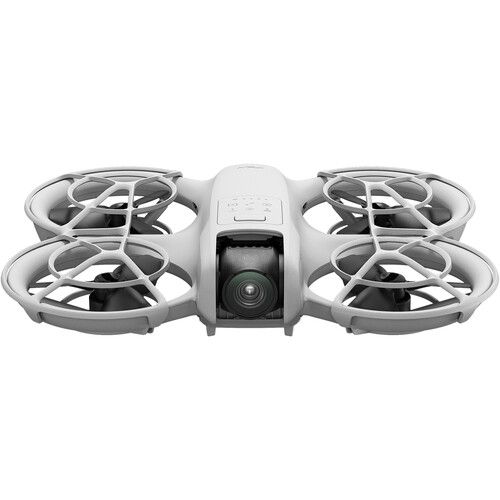
DJI Neo
The Neo is DJI’s first-generation miniature drone designed for autonomous flights with object tracking and preconfigured flight paths to capture short video clips for social media. It is DJI’s lightest weight drone at approximately 48g, and it’s designed with a full cage around the propellers so it’s safer to fly in settings with obstacles. Flight modes can be selected with a button on the drone, and it’s almost effortless to launch it from your hand. There are five standard modes to choose from, and another slot that can be configured with the mode of your choice through the DJI Fly app.
- Very small and lightweight
- Practically effortless to operate
- Designed to take clips for social media
- Can be flown with or without a controller
- So-so video quality
- No obstacle avoidance sensors
- Short battery life
Price, availability, and specs
To combo, or not to combo, that is the question
The Neo is available for as little as $199 from DJI’s online store or any retailer that typically carries DJI drones, including Amazon, B&H, and Adorama. The minimal package includes the drone, propeller guards, one battery, a USB-C cable, a plastic camera guard, two replacement propellers, a small screwdriver, and four screws.
The Combo package adds two batteries and a charging hub for an additional $90 (total of $289). Over the last few years, I have generally stopped suggesting the Fly More Combo is necessary with DJI’s other camera drones because flight times on a single battery are usually good enough that most users can get by with recharging between flights. Things are slightly different with the Neo’s tiny batteries, offering a relatively paltry 17-ish minutes of flight time.
Given that fights can take less than a minute with some of the autonomous modes, a single battery may be plenty for some users. But if you’re activating follow or hover modes, or using the phone or controller for manual flights, that battery won’t last long — and that should tell you if you need the combo.
Bear in mind that the RC-N3 controller isn’t included in the standard package or the Combo, so if you want it, you will pay an additional $129.
What’s good about the DJI Neo?
A new kind of drone for DJI
DJI’s consumer lines have historically been divided into two categories: camera drones in the Mavic family, like the DJI Air 3, and, more recently, acrobatic drones (a.k.a. FPV), like the Avata 2. The Neo feels nothing like an FPV drone, and while it may technically be a camera drone, it has little in common with the Mavic family either. The best comparison point is Snap’s short-lived experiment with drones, the Pixy.
Like the Pixy, DJI designed the Neo to be a small, low-risk, short-range drone. While you can fly it manually with a controller, a smartphone, or even using DJI’s FPV goggles and motion controller, none of these are required. Instead, the primary flight method actually lets the Neo fly itself. A button just behind the camera cycles through a series of preconfigured modes, each with its own logic and flight path. The drone takes off from your hand, identifies your face and body through the camera, and then uses DJI’s object tracking technology to keep you in frame while it performs its autonomous flight.
Trusting drones to fly themselves has always made me nervous, since I’ve seen so many simple things trip them up, even during fully manual flights. But the Neo is designed to be virtually crash-proof. The body weighs just 45g, about a fifth of the DJI Mini, so it probably won’t cause or sustain much damage, even if it drops from pretty high up. The propellers are encircled with a guard rail and cage, so there’s minimal risk they’ll chop into anything or be interrupted unless a thin branch slips in. A low top speed makes impact damage very unlikely. It even has a recessed camera and gimbal, so the most fragile part is reasonably well protected. In other words, outside of losing the drone, there are relatively few risks if anything goes wrong.
There are three preconfigured flight modes for short clips. The first is a Dronie, which sends the drone back to a distance of 4m and maybe a meter higher in elevation, then returns to you. This results in two separate clips, split at the middle point of the flight. The next is a Rocket shot where the Neo flies almost straight up, then descends back down, always with the camera pointing down. Again, this produces two clips. Finally, there is the Circle shot with the drone making a full loop around you for a parallax view of the subject. This is the only one that produces a longer single clip.
Two more modes for open-ended flights are available: Follow and Spotlight. Follow is the traditional subject tracking feature where the drone simply follows you at a short distance. Spotlight is more like a tripod mode where the Neo just hovers in the air, but turns to keep you in view. A sixth slot can also be configured through the app to have another flight mode, and it’s set to Direction Track by default. This mode is just like Follow, but the drone only moves laterally, allowing you to set up a shot where it watches you from the side.
Unlike other drones where setting up to fly can feel like a chore, everything in the Neo is streamlined and effortless. Each mode might have a few configurable options in the DJI Fly app, but they’re kept fairly minimal and simple. All these flight modes activate recording automatically, and the resulting clips are ready to share directly on social media or edit into longer videos. Manual flights with a phone or a controller still behave like flying any other DJI drone, so don’t forget to hit the record button.
All the clips are saved onto 22GB of internal storage. I have some mixed feelings here. On the one hand, it’s nice that you’ll never have to worry about forgetting a handy memory card at home, and it’s always nice to avoid shopping for a new one when counterfeit memory cards are fairly common. On the other hand, accessing videos is more annoying because the drone has to be powered up and connected directly to a computer instead of simply pulling out the memory card and putting it in a reader. Also, if you max out the internal storage, you can’t just swap for a new card, you’ll have to start sacrificing older videos to free up space.
This might leave you wondering if 22GB is enough, but I wouldn’t worry too much about that as long as you can offload video between flight sessions. The max bitrate is 75Mbps (about 9.3MB/s) at the highest settings, though I found a few videos went slightly above that. Even so, my recordings averaged closer to 7.5MB/s, still at 4K30. That means recording time should generally work out to just under 50 minutes, coincidentally just above the upper limit of what three fully charged batteries could achieve in flight time. And if you want to save space, just dip down to 1080p, you won’t be missing much.
Manual flights are also well-supported, even if they’re not really the preferred flight mode. You can fly the Neo using just on-screen controls in the DJI Fly app and connect via Wi-Fi. For better-feeling controls and a significantly more reliable signal, you can also pair the standard RC-N3 controller to a Neo. For something a little more immersive, you can even connect it to the DJI Goggles 3 and a motion controller to use it (a little) like an FPV drone. I don’t have the goggles or motion controller on hand, so I didn’t try out the FPV capabilities. The RC-N3 controller makes the Neo behave like any other DJI drone, and it’s a perfectly good flight experience, but using just on-screen phone controls is kinda clumsy and sticks to a simpler interface.
What’s bad about the DJI Neo?
It’s a cool flying camera, emphasis not quite on the camera
DJI’s Mavic line has earned the right to boast about its incredible image quality and optics, with even the non-Pro Mini 3 producing some pretty impressive shots. However, the Neo is much more like the original Mavic Mini, which didn’t have particularly stellar image quality. Details are muddy and too much sharpening is added in post-processing, and colors are a bit washed out.
In fairness, I would expect this for a drone priced at $200. A few corners had to be cut; it still needed some moderately powerful electronics to perform real-time object tracking, so the sensor and optics had to bear the loss. That’s not to say they’re bad. The 12MP ½-inch sensor is fine in daylight, but it struggles quite a bit in moderately low and mixed lighting. Those produce a lot of noise, which adds a lot of that muddy look in post-processing. Optics are also a factor here, and the lens is very wide at 14mm, so the Neo surely has some distortion correction, contributing to some detail loss. To compensate for all this, DJI turned up the sharpening, which does a few things, including washing out colors.
With that said, I’m not sure any of it matters. I wouldn’t use the Neo if quality is important, but if the footage is just going up on Facebook or Instagram. Viewers will only see it on a smartphone, so most of these issues aren’t that noticeable. Details are usually lost on a small display and most smartphones are oversaturating colors a bit anyway. By the time social media sites finish ruining processing high-quality video, it can look like Neo’s videos anyway. Viewers will forgive lower quality as long as the content is good.
And for those who think they can fix some of this in post, just know that the color depth is 8-bit, and “normal” is the only color profile. Basically, minor banding in the sky could actually happen straight out of camera, and there’s not much room for color grading. I would have liked to see another color profile like HLG, which could squeeze a little more dynamic range out of the camera, but I’m not convinced it would be worth the effort. If these are issues for you, redirect your attention to something in the Mavic family, like the Mini 4 Pro.
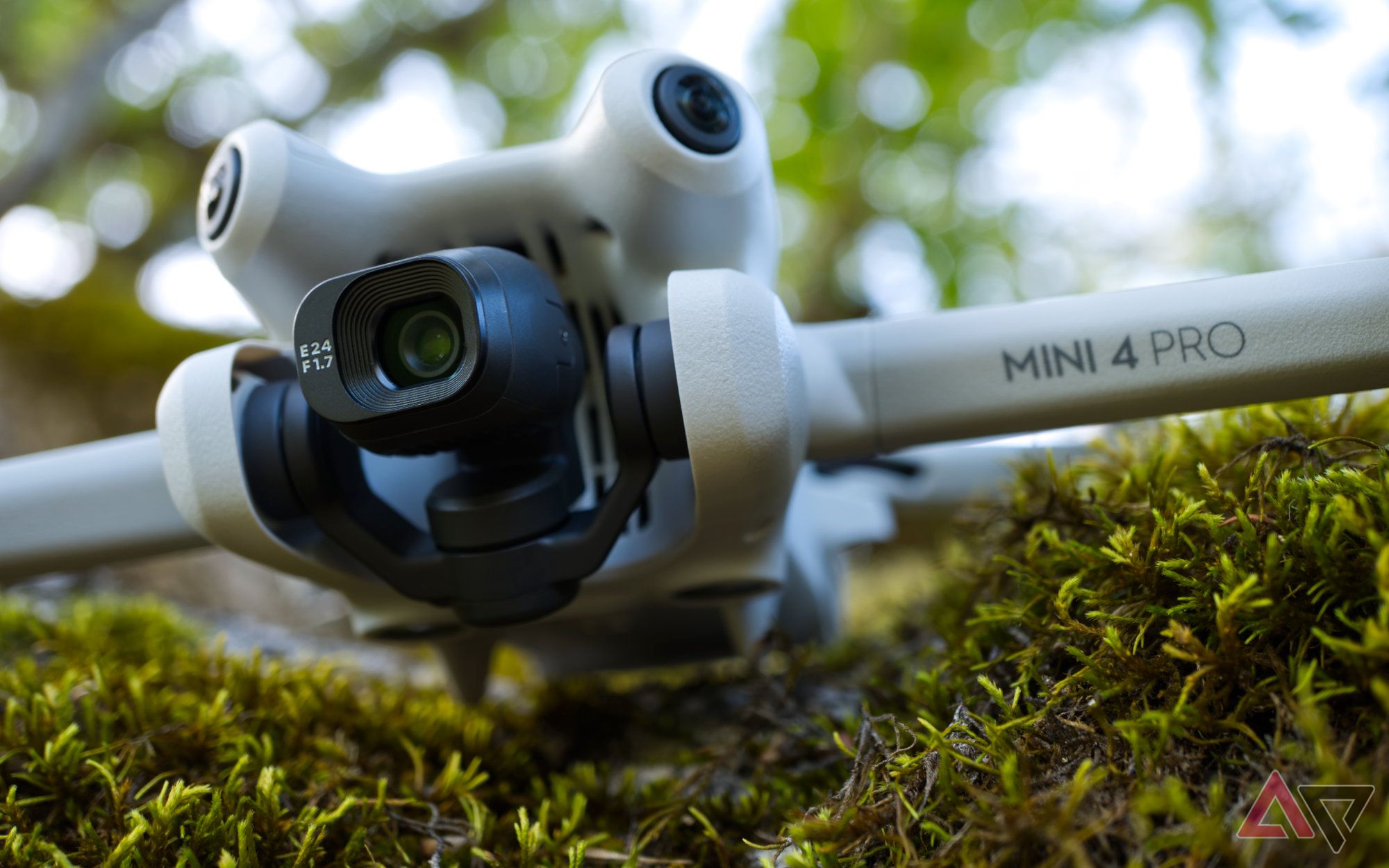
Related
DJI Mini 4 Pro review: The best tiny drone gets even better
DJI continues pushing closer to perfection
Flight time is another expected compromise, which is naturally shorter, since the batteries are also very small. Each battery is rated for a max of 18 minutes, or 17 with prop guards attached; however, it will be shorter than that in practice, once you factor in take-off and landing time. Expect about 12 minutes for follow modes and manual flights. Since the fully autonomous flight modes are generally pretty short, ranging from about 25 to 60 seconds, it’s not nearly as risky if the Neo loses power mid-flight. So, you can expect to get anywhere from 10 to 20 mini-flights out of a single battery.
I mentioned earlier that flight speed is pretty low, but I don’t think it’s obvious how slow it is without some context. During a flight using a controller set to Sport mode, it only moved about twice as fast as my walking speed. That’s enough to follow you on a jog, but not much more than that. Technically, if you’re flying it in true Manual mode using the FPV controllers, it’s rated for up to 16m/s, but I doubt most users will do this.
The Neo’s flight speed, combined with a very lightweight body, means it also doesn’t stand a chance in anything more than a light breeze. Just don’t even try it.
I also mentioned earlier that I’m not worried about crashing the Neo, which is good because it has absolutely zero sensors for obstacle avoidance. There are just sensors on the bottom to detect when a hand is there, so it can begin landing.
Finally, as I’ve pointed out with many previous DJI reviews, none of the company’s control apps are available on the Play Store, including DJI Fly. This means that you’ll have to manually download and install an APK from the company’s website, which feels unnecessary and clunky. Come on, there’s no excuse for it anymore, it’s time to get this sorted out.
Should you buy it?
Designed for casual use
The Neo is a fun and clever little drone that puts many of DJI’s best technological features to work. It’s like a personal camera operator that gets a quick shot of you for posting to social media, then you can toss it into a bag and go about your business. It feels effortless to use and has a toy-like quality, in a good way. The small size and weight make it pretty portable, and the built-in propeller cages prevent it from damaging itself and most other things.
Unfortunately, it’s also a little like a toy in some bad ways. The camera quality looks several years behind, batteries must be swapped or charged frequently, and it really won’t do well with wind stronger than a mild breeze. It’s nice to have and use for quick shots to share on TikTok or YouTube Shorts, but you might want to stick to something more capable for videos people might watch on a computer screen or TV.

DJI Neo
The Neo is DJI’s first-generation miniature drone designed for autonomous flights with object tracking and preconfigured flight paths to capture short video clips for social media. It is DJI’s lightest weight drone at approximately 48g, and it’s designed with a full cage around the propellers so it’s safer to fly in settings with obstacles. Flight modes can be selected with a button on the drone, and it’s almost effortless to launch it from your hand. There are five standard modes to choose from, and another slot that can be configured with the mode of your choice through the DJI Fly app.
